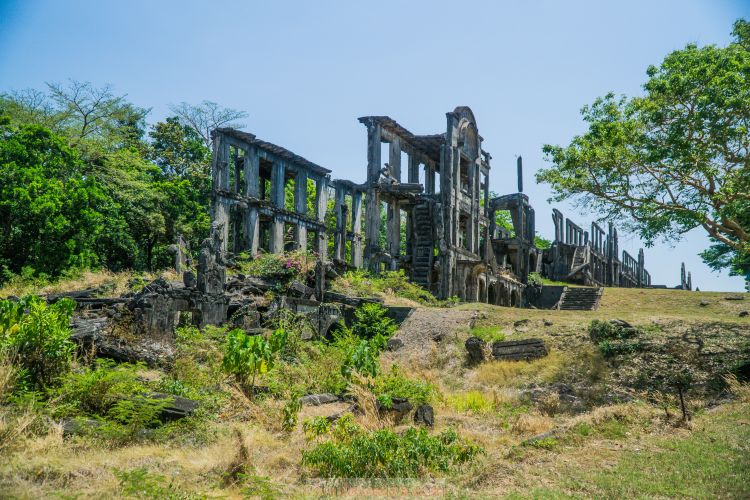Corregidor Island, which is a popular historical tourist attraction in the Philippines, is currently undergoing more improvements following a 10-month tourism masterplan by Palafox Associates.
Now categorized as an eco-tourism site, Corregidor is managed and operated by the Corregidor Foundation, Inc. (CFI) under its current chairperson and CEO, Ms. Cynthia Carrion. It is strongly supported for development and marketing by the Tourism Promotions Board (TPB) under the aegis of Department of Tourism (DOT).
The DOT, TPB and CFI jointly manage Corregidor to remind us not so much of the horrors of war but rather, how high a price we must pay for our freedom and how we must all work to keep the peace.
As the Philippines celebrates its heroes –April 7th is Veterans Day, and April 9th is Araw ng Kagitingan or National Heroes’ Day — it is good to remember Corregidor. It has become synonymous with Filipino and American courage and determination in protecting our freedom.
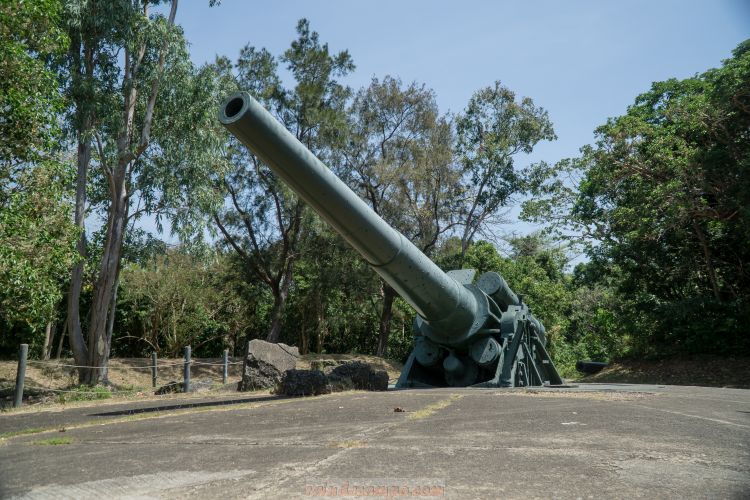
BATTERY HEARN. This 12-inch (350 mm) artillery gun fired 1,000 pound mortar shells and was the longest gun on Corregidor island. It spun 360 degrees on its rotating platform and launched shells as far as 27 kilometers. It didn’t see action during the Corregidor siege because of its position. It’s famous because Japanese soldiers took their victory “Banzai!” photo beside this gun.
Corregidor Island attractions include the Pacific War Memorial with its Dome of Peace, and a sculpture called the Eternal Flame of Freedom. There’s also the Pacific War Memorial Museum that houses World War 2 memorabilia. It is now considered the world’s biggest war museum.
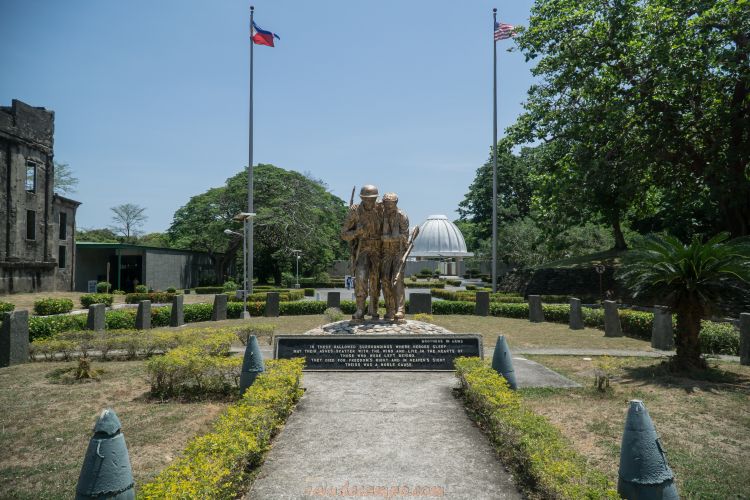
PACIFIC WAR MEMORIAL. This was built to honor the valor of Filipino and American soldiers who fought side-by-side in WW2. This sculpture shows a Filipino and and American soldiers. The Philippines and US flags fly behind them, while the Peace Dome can be glimpsed at the back.
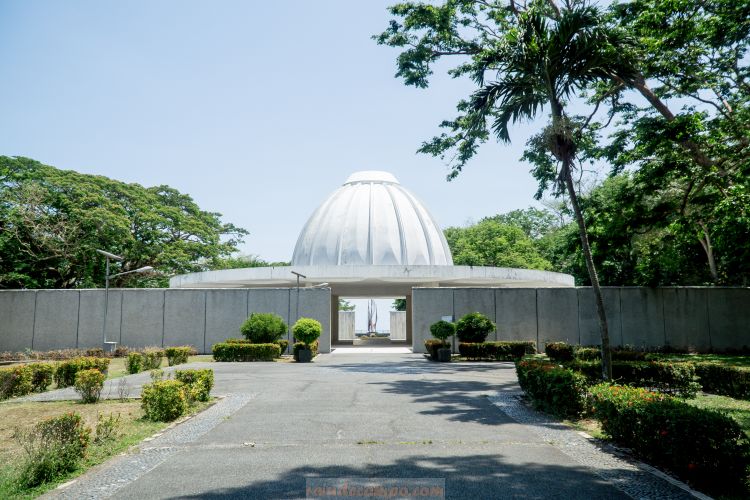
PEACE DOME. This is a place for contemplation and spiritual reflection. Built in 1968 and reportedly costing $3-million, it features a dome housing a circular altar. Every May 5th at 12 noon, sunlight streams through the dome’s opening (oculus) above and shines directly on the altar. This only happens once every year.
Walking down history lane is made more engaging in Corregidor via the guided tram tour of the island. Passing through the Malinta tunnel with alights and sounds show that simulates what it was like during the island’s darkest days during the second world waris something that visitors of the island should not miss.
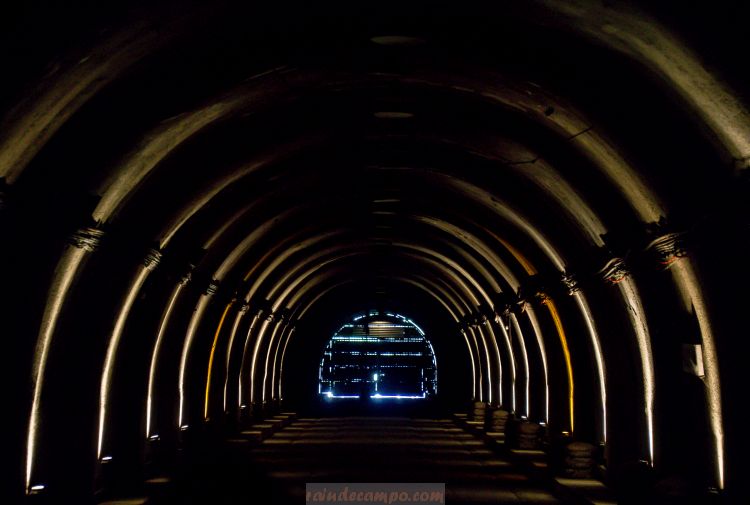
MALINTA TUNNEL. This tunnel is 831 feet (253 m) long, 24 feet (7.3 m) wide and 18 feet (5.5 m) high. It served as the residence of Philippines President Manuel L. Quezon and Vice-President Sergio Osmena along with their families after they fled Manila during the Japanese invasion. Quezon, Osmena, and their families were eventually brought to the U.S. along with Gen. Douglas McArthur via submarine. The tunnel also housed soldiers, medical personnel, and civilians left behind while Japanese forces laid siege to Corregidor.
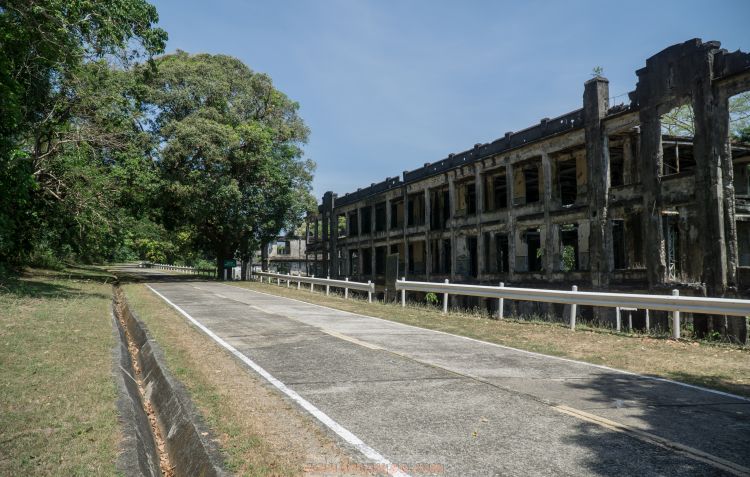
MILE LONG BARRACKS. Measuring 1, 520 feet, This is reportedly the longest military barracks in the world. During the American Commonwealth and before World War 2, this structure housed some 8,000 U.S. troops. These ruins are all that are left after Japanese forces bombarded the area.
As an eco-tourism site, Corregidor is not just a repository of history but an island full of fun and excitement. A fully functional beach resort and camp sites are available for families and friends to relive history, relax and unwind. Indeed, history is made more fun in the Philippines! Corregidor is easily accessible from the mainland via a ferry from the Esplanade Seaside Terminal in the SM Mall of Asia Complex.
For more information, go to http://www.corregidorisland.com.ph/
- Taiwan at the Forefront of Green Economy - July 26, 2024
- Discover Tohoku in the Summer - July 25, 2024
- Back-to-School Tips: How to Make the Most of What You Already Have - July 25, 2024
